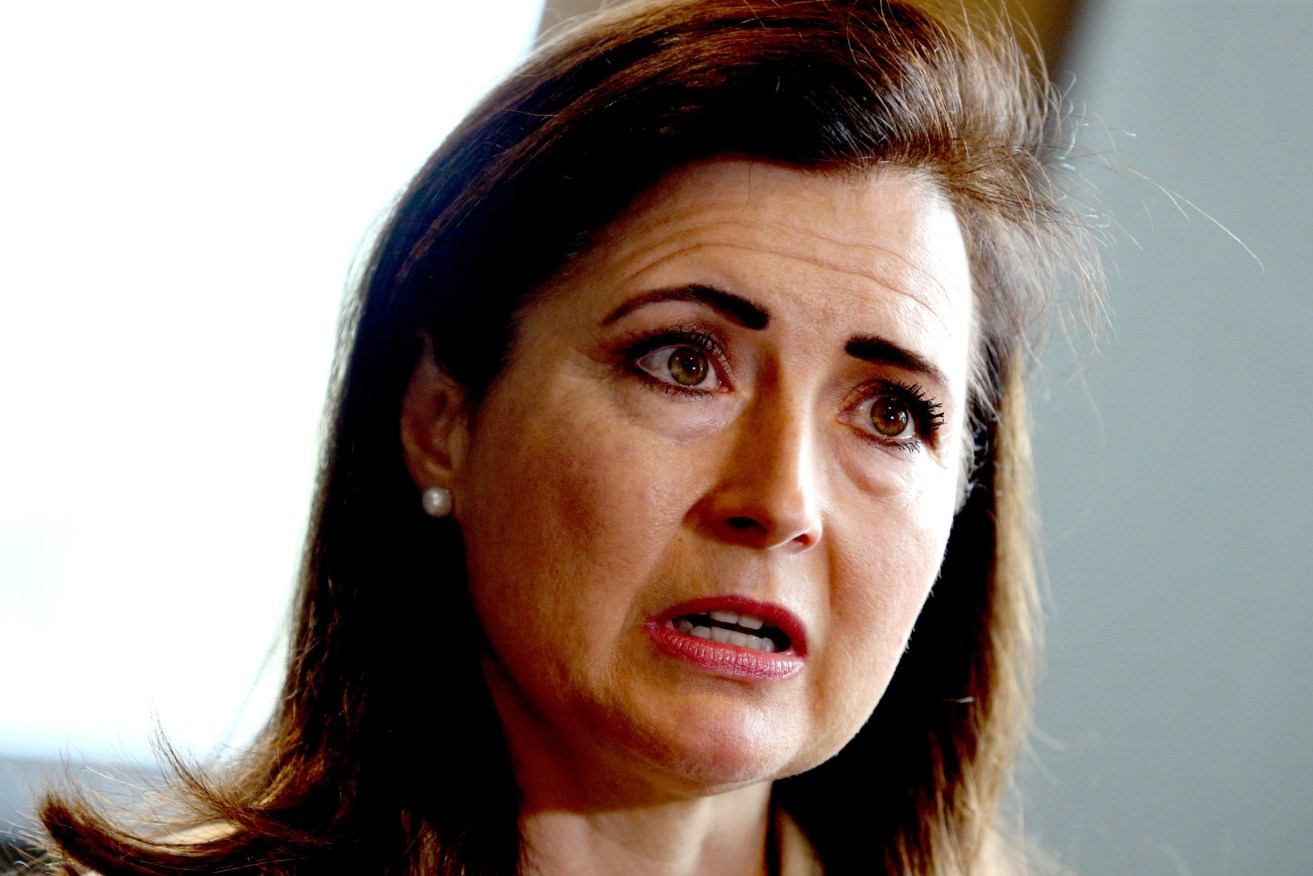Secure facility for “high needs” children rejected
The State Government has rejected a Royal Commission recommendation to house “high-needs” children in care in a secure facility, after advocates warned doing so would only serve to incarcerate vulnerable young people and cause them distress.

Child Protection Minister Rachel Sanderson. AAP Image/Kelly Barnes
The recommendation to establish a “secure therapeutic care facility” for South Australian children in state care with histories of severe neglect and abuse was made in Margaret Nyland’s 2016 Royal Commission report into the state’s child protection system, but was not acted upon by the then Weatherill Government or current Marshall Government.
According to Commissioner Nyland, the proposed facility would be safeguarded by the Supreme Court and used to house children who “can be dealt with only if they are kept securely in place for therapy”.
“The obvious concern about such a facility is that it could be regarded as a form of incarceration, or simply used as a dumping ground for difficult children,” Nyland wrote.
“However, some children have high needs that can be dealt with only if they are kept securely in place for therapy.
“This Commission considers that there is a need for such a facility.”
But Child Protection Minister Rachel Sanderson today said the State Government had decided not to pursue the recommendation “at this time” after an “overwhelming majority” of key child protection stakeholders raised concerns.
She said the Government had instead decided to roll-out a $600,000 therapeutic care model across all residential care units over the next three years, following advice from stakeholders.
“Upon forming Government, we reviewed the evidence, looked at the latest research and thoroughly consulted with stakeholders before forming a view on whether secure care is the most appropriate next step in improving the child protection system,” she said.
“The overwhelming majority of experts told us they do not support a model of secure therapeutic care at this time and key child protection stakeholders recommend that the Government first invest in a therapeutic model of care – and we have listened.”
Those in opposition to the recommendation included those from within Sanderson’s department and well as members of the state’s judiciary.
The state’s lead child protection psychiatric director Dr Prue McEvoy said there was “limited” evidence to support secure care.
“We must concentrate on developing a therapeutic system of care that is trauma-informed and focussed on meeting the needs of children as soon as they come into care,” she said.
“A short-term secure environment does not achieve this and contributes to an ongoing crisis driven system which can perpetuate their distress.”
Commissioner for Aboriginal Children and Young People April Lawrie added a secure care facility would “form part of the ongoing incarceration of our Aboriginal children, or alternatively, be utilised as a facility where Aboriginal children who are deemed ‘difficult’ be placed”.
Aboriginal children make up a third – 33 per cent – of South Australian children and young people in out-of-home care, and over half are in non-Aboriginal care.
A coronial inquest into the death of 14-year-old Heidi Singh, who grew up in emergency state care away from her Aboriginal culture and was electrocuted in 2014 after climbing up a pole near the Noarlunga railway station, found a secure care facility would not help “behaviourally disordered” adolescents.
In her 2019 report summarising the findings, Deputy State Coroner Jayne Basheer wrote that Singh “died without the chance to be supported in her time of need by a loving foster family and without access to skilled therapeutic support”, but secure care was not the “best way forward”.
“I find myself in disagreement with the recommendation of the Nyland Royal Commission to establish such a facility in South Australia,” Basheer wrote.
“I am not persuaded that this is the best way forward to address the needs of behaviourally disordered adolescents, including those who are under the guardianship of the Minister.”
But Singh’s former Families SA social worker told the inquest she “lamented” the lack of a secure therapeutic facility for adolescents and her team was “left with no choice but to manage Heidi, as best they could, in a setting that was considered unsafe and ill-suited to her needs”.
The inquest also heard from a Western Australian child psychiatrist, who said a therapeutic care facility in South Australia could be of “extreme benefit for young people, who, because of their behaviour, place themselves or others at significant harm”.
Guardian for Children and Young People Penny Wright said the State Government had made the “right decision” to not pursue secure care in South Australia, but there had been “little change of significance” in relation to therapeutic care for vulnerable children over the past few years.
“There is little evidence to show benefits from secure therapeutic care so it is better to make the investment needed for all children in residential care,” she said.
The Government in June announced it would spend more than $600,000 rolling-out a new therapeutic care program called the “Sanctuary Model” across all residential care homes.
It requires about 600 Department for Child Protection staff to attend at least two days of training and includes lessons on responding to the needs of Aboriginal children.
Want to comment?
Send us an email, making it clear which story you’re commenting on and including your full name (required for publication) and phone number (only for verification purposes). Please put “Reader views” in the subject.
We’ll publish the best comments in a regular “Reader Views” post. Your comments can be brief, or we can accept up to 350 words, or thereabouts.




